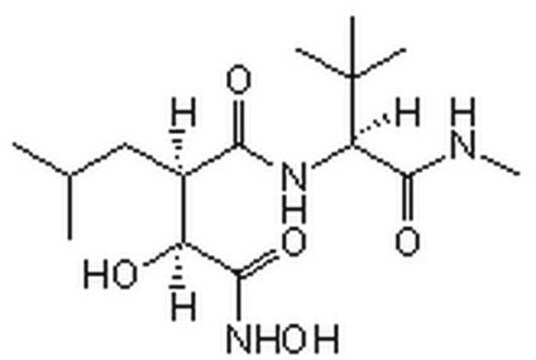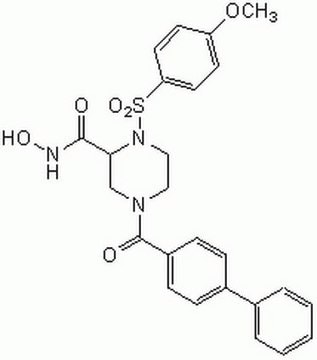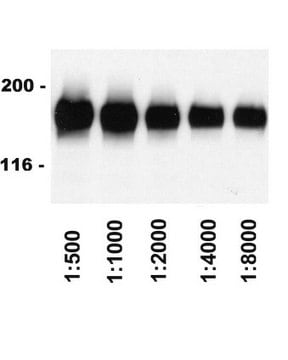196440
Batimastat
≥98% (HPLC), solid, Matrix metalloproteinase inhibitor, Calbiochem
Synonyme(s) :
Batimastat, (4-N-Hydroxyamino)-2 R-isobutyl-3 S-(thienylthiomethyl)succinyl)-L-phenylalanine-N-methylamide, BB-94, (4-N-Hydroxyamino)-2R-isobutyl-3S-(thienylthiomethyl)succinyl)-L-phenylalanine-N-methylamide, BB-94
About This Item
Produits recommandés
product name
Batimastat, Batimastat primarily used in Inhibition.
Niveau de qualité
Pureté
≥98% (HPLC)
Forme
solid
Fabricant/nom de marque
Calbiochem®
Conditions de stockage
OK to freeze
protect from light
Couleur
off-white
Solubilité
DMSO: 50 mg/mL
Conditions d'expédition
ambient
Température de stockage
2-8°C
InChI
1S/C23H31N3O4S2/c1-15(2)12-17(18(22(28)26-30)14-32-20-10-7-11-31-20)21(27)25-19(23(29)24-3)13-16-8-5-4-6-9-16/h4-11,15,17-19,30H,12-14H2,1-3H3,(H,24,29)(H,25,27)(H,26,28)/t17-,18+,19+/m1/s1
Clé InChI
XFILPEOLDIKJHX-QYZOEREBSA-N
Description générale
Conditionnement
Avertissement
Reconstitution
Autres remarques
Whittaker, M., et al. 1999. Chem. Rev.99, 2735.
Parvathy, S., et al. 1998. Biochemistry37, 1680.
Parvathy, S., et al. 1998. FEBS Lett.431, 63.
Yamamoto, M., et al. 1998. J. Med. Chem.41, 1209.
Moss, M.L., et al. 1997. Nature385, 733.
Eccles, S.A., et al. 1996. Cancer Res.56, 2815.
Brown, P.D. 1995. Advan. Enzyme Regul.35, 293.
Wang, X., et al. 1994. Cancer Res.54, 4726.
Davies, B., et al. 1993. Cancer Res.53, 2087.
Informations légales
Code de la classe de stockage
11 - Combustible Solids
Classe de danger pour l'eau (WGK)
WGK 3
Point d'éclair (°F)
Not applicable
Point d'éclair (°C)
Not applicable
Certificats d'analyse (COA)
Recherchez un Certificats d'analyse (COA) en saisissant le numéro de lot du produit. Les numéros de lot figurent sur l'étiquette du produit après les mots "Lot" ou "Batch".
Déjà en possession de ce produit ?
Retrouvez la documentation relative aux produits que vous avez récemment achetés dans la Bibliothèque de documents.
Contenu apparenté
Select different protease inhibitor types based on your needs to prevent protein degradation during isolation and characterization and safeguard proteins in sample prep.
Notre équipe de scientifiques dispose d'une expérience dans tous les secteurs de la recherche, notamment en sciences de la vie, science des matériaux, synthèse chimique, chromatographie, analyse et dans de nombreux autres domaines..
Contacter notre Service technique








